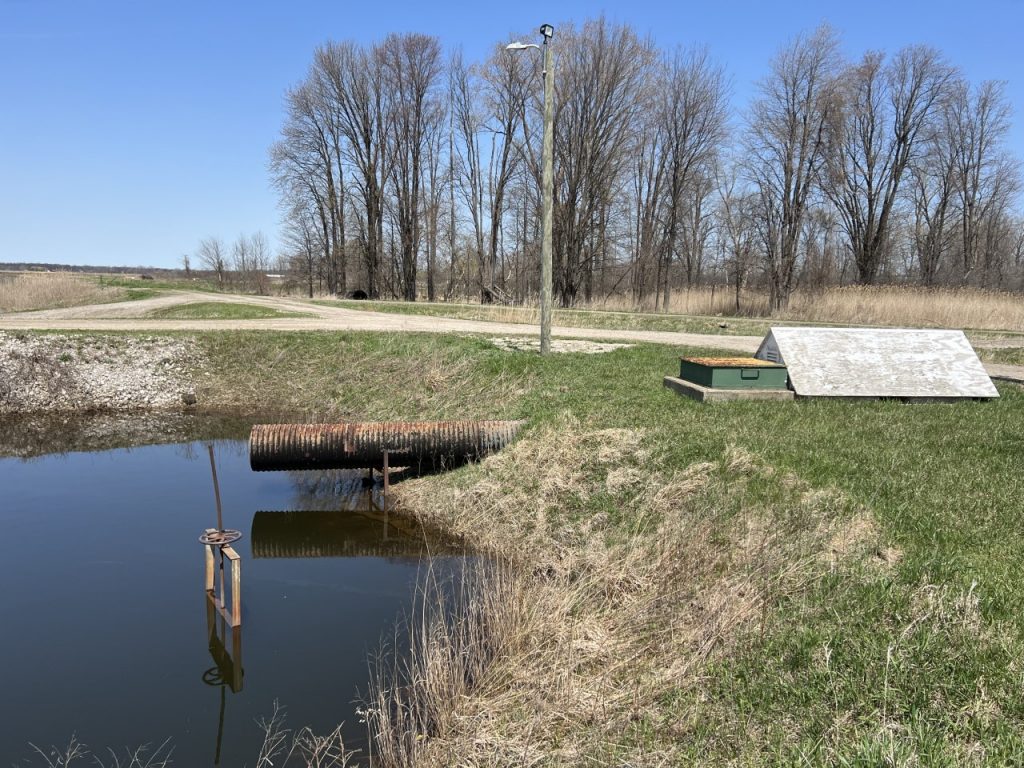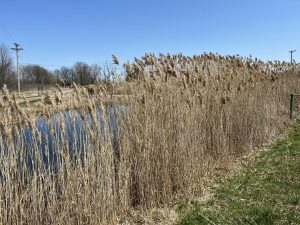DNR enhances vital wetland on Lake St. Clair
St. Clair Flats is home to a wide variety of birds. The DNR manages water levels and grows food to create the ideal habitat.

The DNR uses pumps to regulate water levels in St. Clair Flats.
The Michigan Department of Natural Resources and two conservation groups are working together to revitalize one of the state’s most important wetlands.
“All sorts of different things show up depending on the migration timing.” — John Darling, Michigan DNR wildlife technician
The St. Clair Flats State Wildlife Area covers more than 25,000 acres at the north end of Lake St. Clair. It attracts a variety of waterfowl, especially ducks.
To make the wetland habitable for the birds, the DNR uses pumps to adjust water levels.
Darling says they can create just the right habitat on Harsens Island.
“We can raise the water up to where the ducks can utilize it, and then we can drop it back down to do the farming we need to do in the marshlands,” he says.
Darling says adjusting the water levels gives the DNR another tool to fight invasive species, such as phragmites australis. Phragmites are tall reeds that grow in massive clusters and can overtake the native ecosystem.
Read more: How wetlands can help prevent property damage and save lives during floods
Controlling the water levels also allows Darling and his colleagues to farm about 800 acres in the flats. This provides different food sources for waterfowl.

“It’s a combination of corn, buckwheat, millet and sorghum,” Darling says. “By planting a variety of different species, we’re filling different needs for different species of birds.”
Thousands of birds pass through St. Clair Flats each year. Besides ducks, Darling says the wetland attracts a wide variety of species.
“In addition to geese and the occasional swan, we have a lot of sandhill cranes,” he says. “We have a lot of different raptors. We have a huge population in northern areas, which are a wetland associated hawk. This is a place that hawks just love. It’s perfect for them.”
People have also spotted bald eagles, snowy owls, snow buntings, yellow-headed blackbirds and greater yellowlegs.
“All sorts of different things show up depending on the migration timing,” Darling says.
Tern, tern, tern
That includes black terns. St. Clair Flats home to Michigan’s largest remaining colony of black terns, which have almost disappeared from the state.
The Audubon Society works with the DNR to preserve black tern habitats and study the birds. Audubon conservation manager Erin Rowan says it’s challenging, partly due to the proliferation of phragmites throughout the flats.

Rowan says phragmites can take over a wetland and form dense monocultures, crowding out the more diverse habitats black terns need.
“What they really need is what’s called hemi-marsh,” she says. Hemi-marsh is a mix of open water and emergent vegetation that provide good nesting for black terns. Despite the presence of phragmites, St. Clair Flats do provide refuge for black terns.
“There are really nice open spaces and the flats provide black terns with really ideal nesting habitat,” Rowan says.
Audubon designated St. Clair Flats as an important bird area. It’s also an important duck hunting site. Ducks Unlimited is the DNR’s other partner in maintaining the wetland. Kelly Rush is the group’s regional biologist.
“We have a full-service engineering shop and do a lot of grant writing to secure funding for the DNR,” she says. Ducks Unlimited is working with the state to replace old water pumps in St. Clair Flats and hire contractors to install them.
The wildlife area is located on Harsens Island. The flats will host an open house and birding tour starting at 9 a.m. Saturday.
Trusted, accurate, up-to-date.
WDET strives to make our journalism accessible to everyone. As a public media institution, we maintain our journalistic integrity through independent support from readers like you. If you value WDET as your source of news, music and conversation, please make a gift today.
